Key Takeaways
- Color psychology plays a crucial role in fabric selection and mood
- Warm colors like red and orange can evoke energy and passion
- Cool tones such as blue and green promote calmness and relaxation
- Neutral shades offer versatility and balance in wardrobe choices
- Personal color analysis helps determine flattering hues for individuals
- Seasonal color trends influence fabric choices in fashion
- Texture and fabric type interact with color to affect overall mood
- Cultural associations with colors vary globally and impact preferences
In the world of fashion and personal style, the connection between mood and fabric color choices is a fascinating interplay of psychology, cultural influences, and individual preferences. As we navigate our daily lives, the colors we wear can significantly impact our emotional state and how others perceive us.
From the energizing effect of vibrant reds to the calming influence of serene blues, the hues we choose to drape ourselves in have the power to transform our outlook and boost our confidence. This comprehensive guide will explore the intricate relationship between colors, fabrics, and our emotional well-being, providing insights into how to harness the power of color to elevate your mood and enhance your personal style.

The Psychology of Color in Fashion
Color psychology has long been a subject of interest for designers, marketers, and psychologists alike. When it comes to fashion, the impact of color on our emotions and behaviors is particularly profound.
The Power of First Impressions
First impressions are often formed within seconds, and the colors we wear play a significant role in shaping these initial perceptions. A bold red dress might convey confidence and assertiveness, while a soft pastel ensemble could suggest approachability and gentleness. Understanding these color associations can help us make intentional choices about the image we project to the world.
Emotional Responses to Different Hues
Each color on the spectrum has the potential to evoke specific emotional responses. Warm colors like reds, oranges, and yellows are often associated with energy, excitement, and passion. On the other hand, cool tones such as blues, greens, and purples tend to promote feelings of calmness, serenity, and introspection. By selecting fabrics in colors that align with our desired emotional state, we can actively influence our mood throughout the day.
Cultural Color Symbolism
It’s important to note that color symbolism can vary significantly across cultures. While white is often associated with purity and weddings in Western cultures, it’s traditionally linked to mourning in many Eastern societies. Similarly, red symbolizes luck and prosperity in Chinese culture but may be associated with danger or warning in other contexts. Being aware of these cultural nuances can help us make more informed color choices, especially when dressing for diverse audiences or international settings.
Warm vs. Cool: The Color Temperature Spectrum
Understanding the concept of color temperature is crucial for making informed fabric choices that complement our desired mood and style.
Energizing Warm Tones
Warm colors, including reds, oranges, and yellows, are known for their ability to stimulate and energize. These hues can increase heart rate and create a sense of excitement or urgency. Incorporating warm-toned fabrics into your wardrobe can be particularly effective when you need a boost of confidence or want to make a bold statement.
Soothing Cool Hues
On the opposite end of the spectrum, cool colors like blues, greens, and purples have a calming effect on the mind and body. These shades are often associated with nature, promoting feelings of tranquility and relaxation. Opting for cool-toned fabrics can be an excellent choice for creating a serene and composed appearance, especially in high-stress situations or when you want to project an air of professionalism.
Balancing Act: Neutrals and Earth Tones
Neutral colors, including beiges, grays, and whites, serve as versatile building blocks in any wardrobe. These hues can help balance out bolder color choices and provide a sense of stability. Earth tones, such as rich browns and muted greens, offer a grounding effect and can evoke feelings of connection to nature. Incorporating neutrals and earth tones into your fabric choices allows for greater flexibility in creating balanced and harmonious outfits.

Personal Color Analysis: Finding Your Perfect Palette
To truly harness the power of color in your wardrobe, it’s essential to understand which hues complement your natural coloring.
Understanding Skin Undertones
The first step in personal color analysis is determining your skin’s undertone. Skin undertones generally fall into three categories: warm, cool, or neutral. Warm undertones have a golden or peachy hue, cool undertones appear more pink or blue, and neutral undertones are a balanced mix of both. Identifying your undertone can help guide you towards colors that will enhance your natural complexion and make you look more vibrant and healthy.
Seasonal Color Theory
Seasonal color theory categorizes individuals into four types: Spring, Summer, Autumn, and Winter. Each season is associated with a specific palette of colors that harmonize with the individual’s natural coloring. For example, those with a “Spring” color profile often look best in warm, clear colors like coral and golden yellow, while “Winter” types shine in bold, cool colors like royal blue and deep purple. Understanding your seasonal color type can provide a helpful framework for selecting fabric colors that will make you look and feel your best.
Experimenting with Color Combinations
Once you’ve identified your most flattering colors, don’t be afraid to experiment with different combinations. Monochromatic looks using varying shades of the same color can create a sophisticated and cohesive appearance. Complementary color pairings, such as blue and orange or purple and yellow, can add visual interest and energy to your outfits. The key is to find a balance that feels authentic to your personal style while also considering the mood you want to convey.

The Impact of Fabric Texture on Color Perception
The interplay between fabric texture and color can significantly influence how a hue is perceived and experienced.
- Smooth, shiny fabrics like silk can intensify color and create a luxurious feel
- Matte textures tend to soften colors and provide a more subdued appearance
- Textured fabrics like tweed or boucle can add depth and dimension to colors
- Sheer materials allow for layering and blending of colors
- Velvet and other pile fabrics can change color appearance based on light direction
- Metallic threads or finishes can alter color perception and add sparkle
- Knit textures can create visual interest through color variegation
- Embroidery and prints can combine multiple colors in intricate patterns
- Distressed or faded fabrics can create a vintage or lived-in color effect
- The weight of a fabric can influence how color is draped and falls on the body
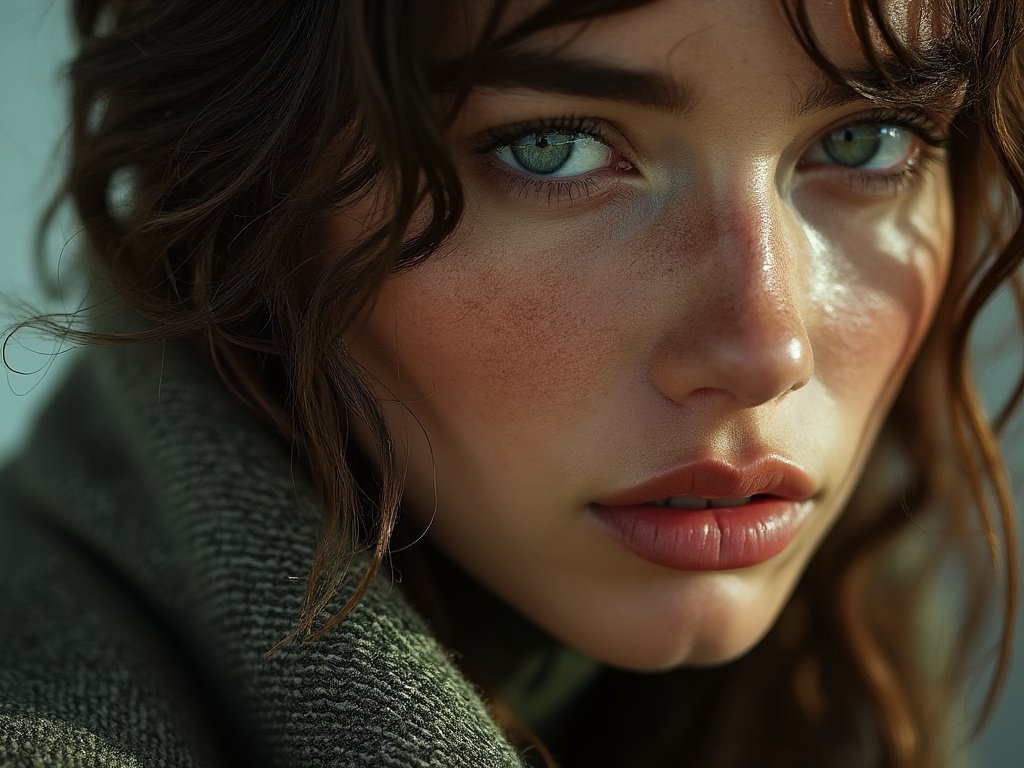
Seasonal Color Trends and Their Influence on Mood
Fashion’s cyclical nature brings new color trends with each passing season, influencing our fabric choices and, consequently, our moods.
Spring/Summer Palettes: Embracing Lightness and Vibrancy
As the days grow longer and temperatures rise, spring and summer fashion tends to gravitate towards lighter, brighter hues. Pastels like soft pinks, mint greens, and sky blues evoke feelings of freshness and renewal. These gentle tones can lift our spirits and create a sense of optimism. Vibrant tropical colors, such as coral, turquoise, and sunny yellow, also make frequent appearances, infusing wardrobes with energy and excitement. Incorporating these lively hues into your fabric choices during the warmer months can help maintain a positive and upbeat mood.
Fall/Winter Hues: Coziness and Sophistication
As the seasons shift towards cooler temperatures, fashion color palettes tend to deepen and become more muted. Rich jewel tones like emerald green, sapphire blue, and amethyst purple offer a sense of luxury and sophistication. Warm, earthy shades such as rust, mustard, and burgundy create a cozy and comforting atmosphere. These autumnal and wintry hues can help us feel grounded and protected during the colder months, influencing our mood to be more reflective and introspective.
The Influence of Color Forecasting
Color forecasting agencies play a significant role in shaping fashion trends and, by extension, our fabric color choices. These organizations analyze global cultural, social, and economic factors to predict which colors will resonate with consumers in upcoming seasons. By staying informed about these color trends, we can make more conscious decisions about incorporating mood-enhancing hues into our wardrobes, balancing personal preferences with current style directions.
The Role of Neutrals in Mood Stabilization
Neutral colors play a crucial part in creating a balanced and versatile wardrobe while also offering mood-stabilizing properties.
The Versatility of Black and White
Black and white, the ultimate neutrals, have long been staples in fashion for their timeless appeal and versatility. Black fabric can convey sophistication, mystery, and power, making it an excellent choice for formal occasions or when you want to project authority. White, on the other hand, symbolizes purity, cleanliness, and new beginnings. It can create a fresh, crisp look that’s perfect for projecting an air of professionalism or embracing a minimalist aesthetic. Both black and white can serve as excellent bases for building outfits, allowing other colors to shine or creating striking monochromatic looks.
Grays: The Middle Ground
Gray, in its many shades, offers a softer alternative to the stark contrast of black and white. Light grays can be soothing and calming, while darker charcoal tones exude sophistication and maturity. Gray fabrics can help create a sense of balance and stability in your wardrobe, making them excellent choices for professional settings or when you want to project a composed and thoughtful image.
Earth Tones and Their Grounding Effect
Earth tones, including various shades of brown, beige, and taupe, have a naturally grounding effect on our emotions. These colors are associated with stability, reliability, and comfort. Incorporating earth-toned fabrics into your wardrobe can help create a sense of warmth and security, making them ideal choices for days when you need to feel centered and confident. The versatility of earth tones also allows for easy mixing and matching with both vibrant colors and other neutrals.
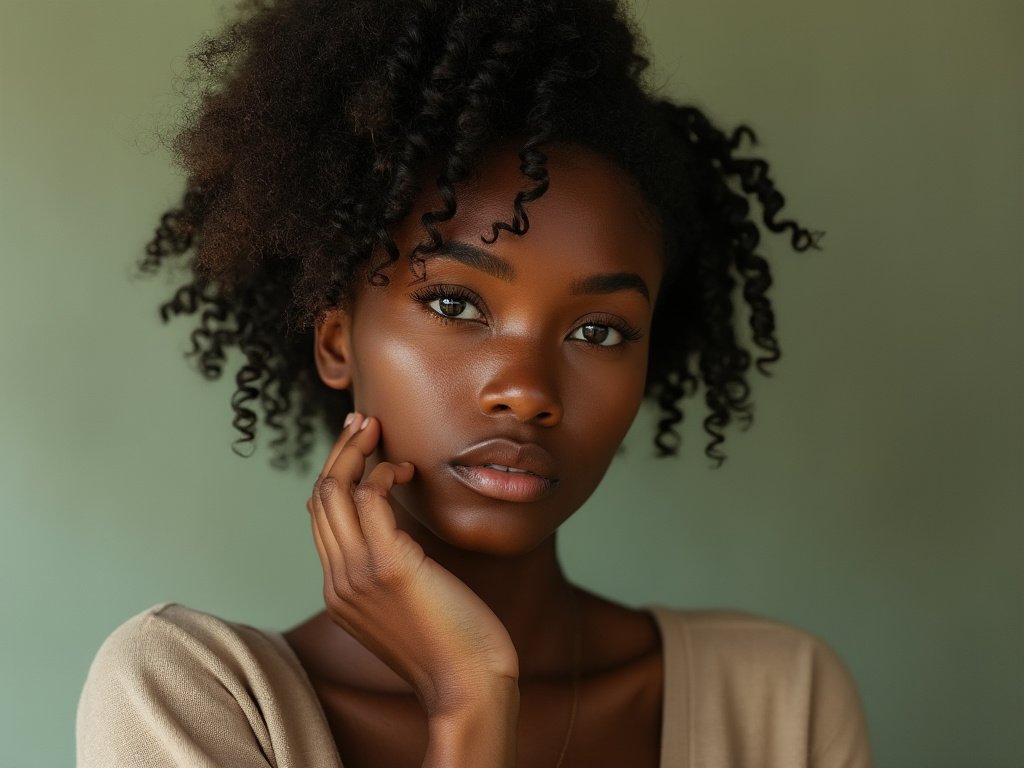
Color Blocking: A Mood-Boosting Technique
Color blocking is a dynamic fashion technique that can significantly impact mood and style.
The Art of Combining Colors
Color blocking involves pairing solid colors in bold, often contrasting combinations. This technique can create visually striking outfits that express creativity and confidence. By strategically combining different colored fabrics, you can draw attention to your best features or create optical illusions that flatter your figure. The key to successful color blocking lies in understanding color theory and choosing hues that complement each other while also aligning with your personal color palette.
Emotional Impact of Bold Combinations
The bold nature of color blocking can have a powerful effect on both the wearer and observers. Combining vibrant colors can evoke feelings of joy, excitement, and playfulness. It’s an excellent technique for days when you want to boost your mood or make a strong visual statement. On the other hand, color blocking with more subdued or complementary tones can create a sophisticated and harmonious look that projects confidence and style.
Balancing Energy Levels
When employing color blocking techniques, it’s important to consider the energy levels of the colors you’re combining. Pairing a high-energy color like red with a calming blue can create a balanced outfit that’s both exciting and grounded. Similarly, combining warm and cool tones can help achieve a harmonious look that influences your mood in a positive way. Experimenting with different color combinations allows you to find the perfect balance that resonates with your personal style and desired emotional state.
The Influence of Patterns and Prints on Mood
Patterns and prints add another layer of complexity to the relationship between fabric colors and mood.
- Floral prints can evoke feelings of femininity, romance, and connection to nature
- Geometric patterns may promote a sense of order, structure, and modernity
- Animal prints often convey confidence, boldness, and a touch of wildness
- Stripes can create a classic, orderly appearance or a playful, nautical vibe
- Polka dots typically evoke a fun, youthful energy and nostalgia
- Abstract prints allow for personal interpretation and can spark creativity
- Paisley patterns often suggest bohemian flair and free-spiritedness
- Plaid fabrics can evoke feelings of tradition, coziness, and academic associations
- Tie-dye patterns are associated with individuality, creativity, and a carefree attitude
- Ombre or gradient prints can create a sense of flow and transition in mood
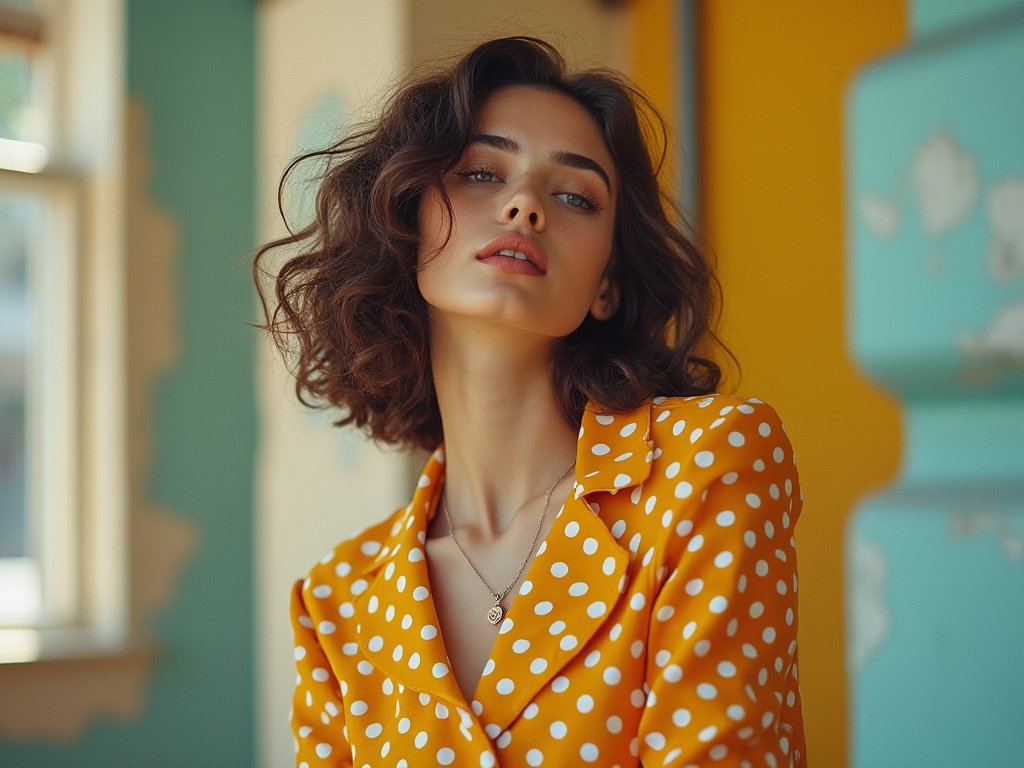
The Power of Accessories in Color Coordination
Accessories play a vital role in enhancing or modifying the mood created by fabric color choices.
Statement Pieces: Bold Color Accents
Accessories in bold, contrasting colors can serve as powerful mood enhancers when paired with more neutral outfits. A vibrant scarf, a colorful handbag, or a pair of eye-catching shoes can instantly lift your spirits and add a pop of personality to your ensemble. These statement pieces allow you to experiment with mood-boosting colors without committing to an entirely colorful outfit, making them perfect for gradually expanding your color comfort zone.
Harmonizing Hues: Subtle Mood Enhancement
For a more subtle approach to mood enhancement, choose accessories that harmonize with the colors of your clothing. This technique can create a cohesive and polished look while gently reinforcing the mood you’re aiming to achieve. For example, pairing a navy blue dress with accessories in varying shades of blue can deepen the sense of calm and serenity associated with this color. This approach allows you to build a consistent emotional narrative through your outfit choices.
Metallic Accents: Adding Sparkle and Sophistication
Metallic accessories, whether in gold, silver, or rose gold tones, can add a touch of glamour and sophistication to any outfit. These shimmering accents can elevate your mood by creating a sense of luxury and special occasion, even in everyday wear. The reflective quality of metallic accessories also interacts beautifully with different fabric colors, sometimes enhancing their vibrancy or adding depth to more muted tones. Incorporating metallic elements into your accessory choices can be an effective way to boost confidence and create a polished, put-together look.
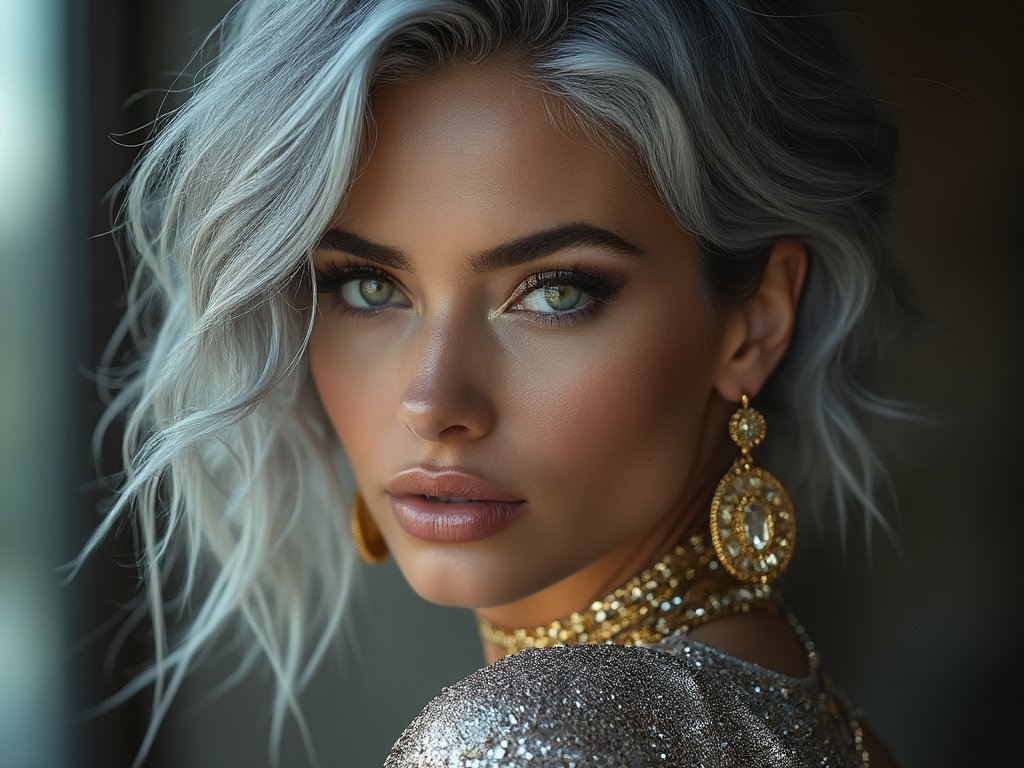
The Impact of Lighting on Fabric Color Perception
The way we perceive fabric colors can vary significantly depending on the lighting conditions, which in turn affects our mood and the overall impact of our outfit choices.
Natural Light vs. Artificial Light
Natural daylight provides the most accurate representation of fabric colors, revealing their true hues and subtle undertones. Outfits that look vibrant and mood-lifting in natural light may appear differently under artificial lighting. Fluorescent lights, for example, can cast a cool, sometimes harsh glow that may alter the appearance of warm-toned fabrics. Incandescent bulbs, on the other hand, tend to add a warm, golden cast to colors. Being aware of these lighting differences can help you make more informed choices about which fabrics to wear in different environments to maintain your desired mood and appearance.
Time of Day Considerations
The quality of natural light changes throughout the day, affecting how fabric colors are perceived. Morning light tends to be cooler and bluer, while afternoon light has a warmer, golden quality. Evening light can cast long shadows and mute colors, potentially altering the mood conveyed by your outfit. Consider these factors when planning outfits for different times of day or specific events to ensure your fabric color choices have the intended emotional impact.
Indoor vs. Outdoor Settings
The setting in which you’ll be wearing your outfit also plays a role in how fabric colors are perceived and how they influence mood. Colors that appear subtle and sophisticated indoors may seem more vibrant and attention-grabbing in outdoor settings. Similarly, bold colors that create a lively atmosphere in a bright, open space might feel overwhelming in a more intimate indoor environment. Taking these contextual factors into account can help you select fabric colors that maintain their intended mood-enhancing properties across various settings.

Fabric Color Care: Maintaining Mood-Boosting Hues
To fully leverage the mood-enhancing properties of fabric colors, it’s essential to maintain their vibrancy and integrity through proper care.
Washing and Drying Techniques
Different fabric colors require specific care to prevent fading and maintain their mood-boosting qualities. Dark colors often benefit from being washed in cold water and turned inside out to prevent fading. Bright, vibrant hues may require special color-preserving detergents to maintain their intensity. Always follow the care instructions on garment labels, and consider hand-washing delicate or particularly cherished colored items to extend their life and preserve their emotional impact.
Storage Solutions for Color Preservation
Proper storage is crucial for maintaining the vibrancy of colored fabrics. Store garments away from direct sunlight, which can cause fading over time. Use padded hangers for delicate items to prevent stretching and distortion. For long-term storage, consider using breathable garment bags to protect clothes from dust while allowing air circulation. By preserving the integrity of your fabric colors, you ensure that they continue to positively influence your mood each time you wear them.
Reviving Faded Colors
Even with the best care, fabric colors may fade over time, potentially diminishing their mood-enhancing effects. There are several techniques to revive faded colors, such as using vinegar in the wash cycle or trying color-restoring products designed for specific hues. For more dramatic color revival, consider dyeing faded garments to give them new life. By maintaining and reviving the colors in your wardrobe, you can continue to harness their emotional benefits and extend the life of your favorite mood-boosting pieces.
Summary Table
| Color Category | Emotional Impact | Ideal Applications | Fabric Care Guidelines |
|---|---|---|---|
| Warm Hues | Invigorating, passionate | Confidence-boosting, bold statements | Cold water wash, color-safe detergents |
| Cool Tones | Soothing, contemplative | Professional environments, stress relief | Gentle cycle, mild detergents |
| Neutral Shades | Stabilizing, adaptable | Wardrobe foundations, layering | Standard care, spot cleaning when possible |
| Soft Pastels | Gentle, uplifting | Spring/summer attire, subtle moods | Delicate wash cycle, avoid high heat |
| Rich Jewel Tones | Opulent, refined | Autumn/winter wear, formal events | Dry clean or gentle wash, proper storage |

Conclusion
The connection between mood and fabric color choices is a powerful tool in personal style and emotional well-being. By understanding color psychology, considering personal color analysis, and staying aware of seasonal trends, we can make intentional choices that positively impact our daily lives. The interplay of color with fabric texture, patterns, and lighting adds depth to this relationship, offering endless possibilities for self-expression and mood enhancement.
As we navigate the complex world of fashion and personal style, it’s important to remember that color choices are deeply personal. While certain hues may have general associations, individual experiences and cultural backgrounds can significantly influence how we perceive and react to different colors. The key is to experiment, observe how different fabric colors make you feel, and build a wardrobe that resonates with your unique personality and lifestyle.
Ultimately, the clothes we wear are more than just a covering for our bodies; they’re a form of non-verbal communication and a means of influencing our own emotional state. By harnessing the power of color in our fabric choices, we can create a wardrobe that not only looks great but also serves as a daily mood-boosting tool, helping us face the world with confidence, creativity, and a positive outlook.
Frequently Asked Questions
How can I determine my personal color palette?
To determine your personal color palette, start by identifying your skin’s undertone (warm, cool, or neutral). Observe which colors make your complexion appear brighter and which ones wash you out. Professional color analysis or online tools can also help you find your most flattering colors.
Are there universal colors that boost mood for everyone?
While color preferences are subjective, certain hues like sunny yellow, sky blue, and vibrant green are often associated with positive emotions across cultures. However, individual experiences and associations can greatly influence how colors affect mood.
How do I incorporate mood-boosting colors if I prefer a neutral wardrobe?
You can add pops of mood-boosting colors through accessories like scarves, jewelry, or shoes. Alternatively, try incorporating subtle patterns or textures in your preferred neutral tones to add interest without straying from your comfort zone.

Can wearing certain colors actually improve my performance or productivity?
Research suggests that colors can influence cognitive performance. For example, wearing red might enhance physical performance, while blue could boost creative thinking. However, these effects can vary based on individual preferences and associations.
How do cultural differences affect color choices and mood associations?
Cultural backgrounds significantly influence color associations. For instance, white symbolizes purity in Western cultures but represents mourning in some Eastern cultures. Consider cultural context when choosing colors, especially in diverse or international settings.
What’s the best way to combine colors for a balanced outfit and mood?
Use the color wheel as a guide. Complementary colors (opposite on the wheel) create vibrant looks, while analogous colors (next to each other) offer harmonious combinations. Balance bold hues with neutrals for a sophisticated appearance.
How can I prevent my colorful clothes from fading quickly?
Wash colored clothes in cold water, turn them inside out before washing, use color-preserving detergents, and avoid direct sunlight when drying. For delicate or vibrant items, consider hand washing or dry cleaning.
Are there any colors I should avoid wearing to important meetings or interviews?
While color choices are personal, extremely bright or unconventional colors might be distracting in formal settings. Stick to classic, professional colors like navy, gray, or black, with subtle pops of color if desired.
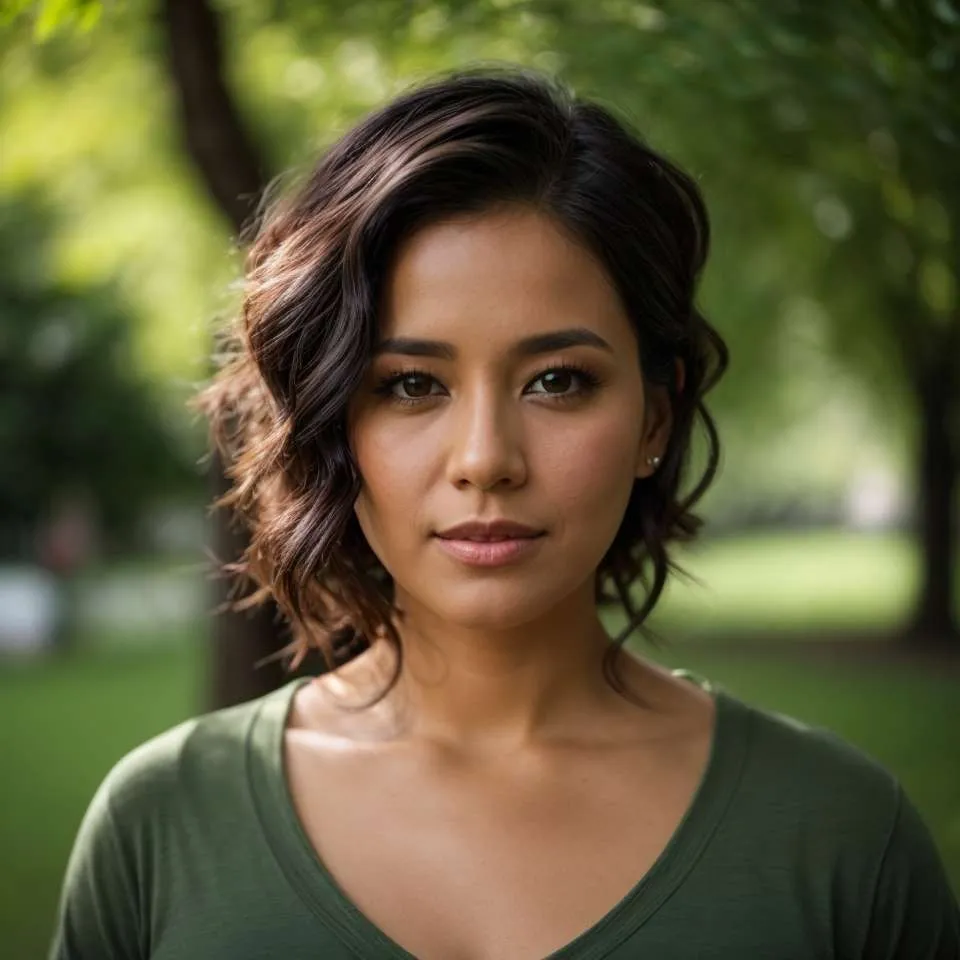
Joanna Perez, with a degree in Creative Writing, excels in recommending distinctive clothing color mixes and trends that deeply connect with readers. She simplifies the often daunting task of color selection, making fashion decisions more personalized and impactful. Her passion for vibrant color palettes and the stories they tell makes her an indispensable voice in the fashion community.
Reviewed By: Marcella Raskin and Anna West
Edited By: Lenny Terra
Fact Checked By: Sam Goldman
Photos Taken or Curated By: Matthew Mansour
